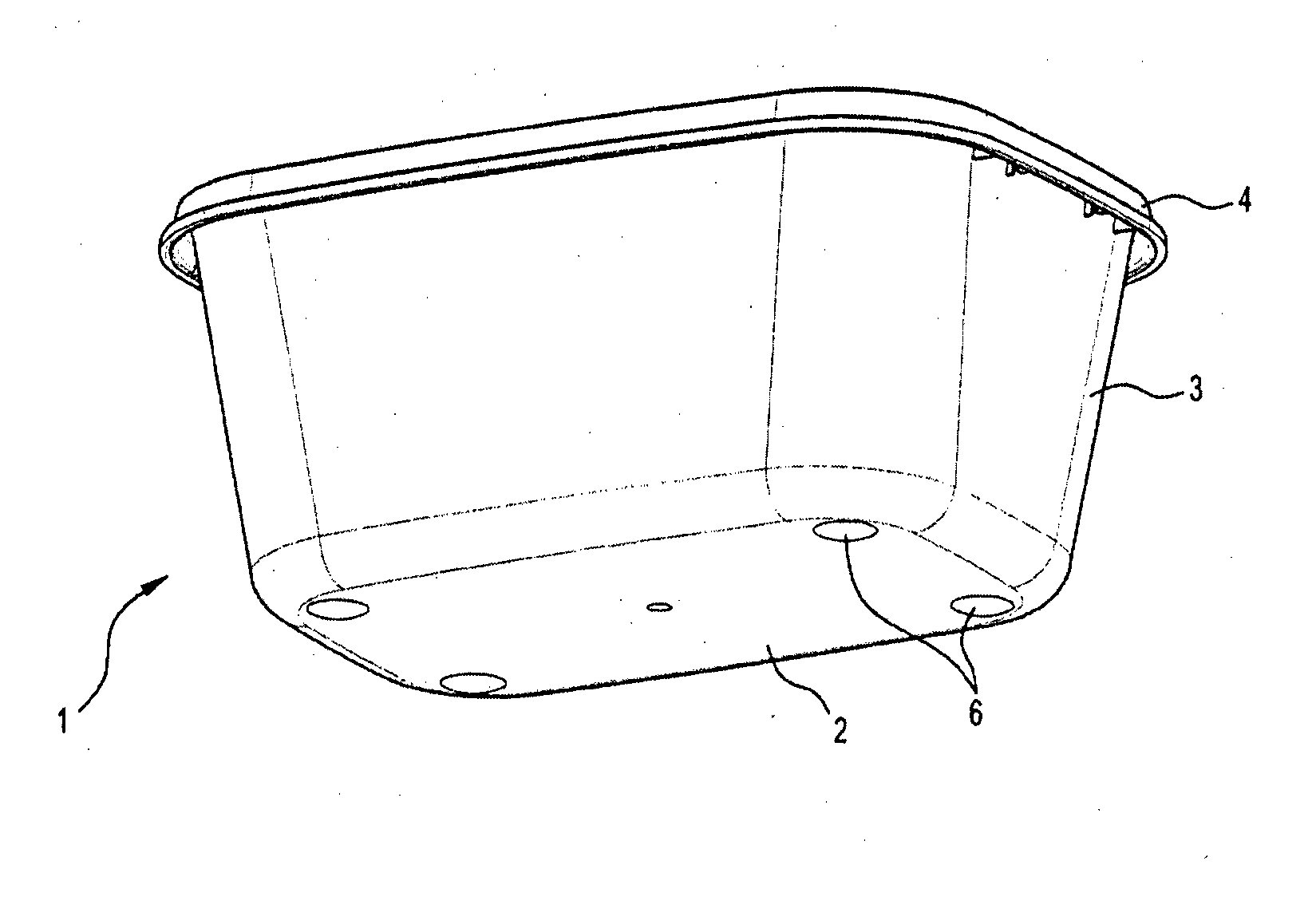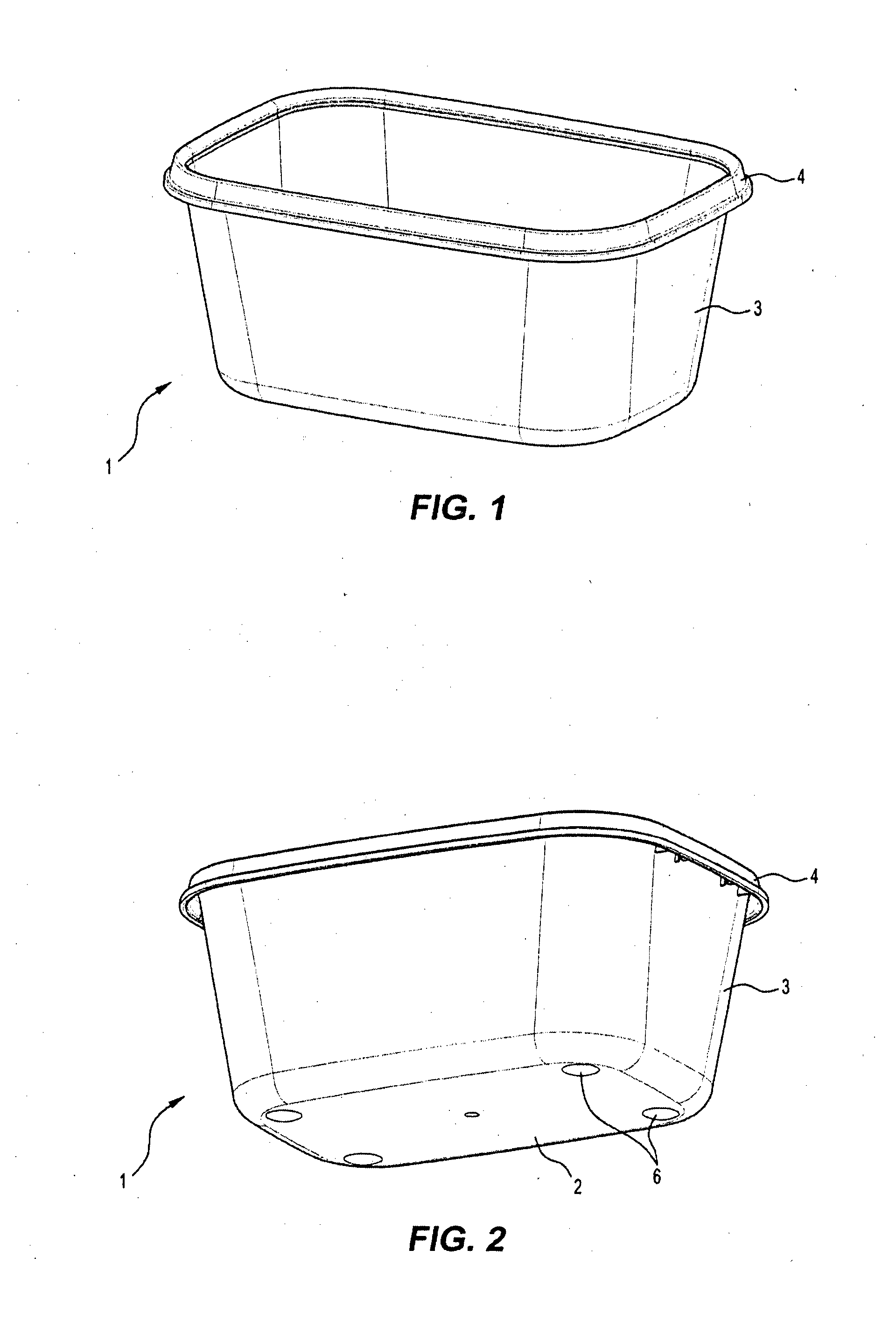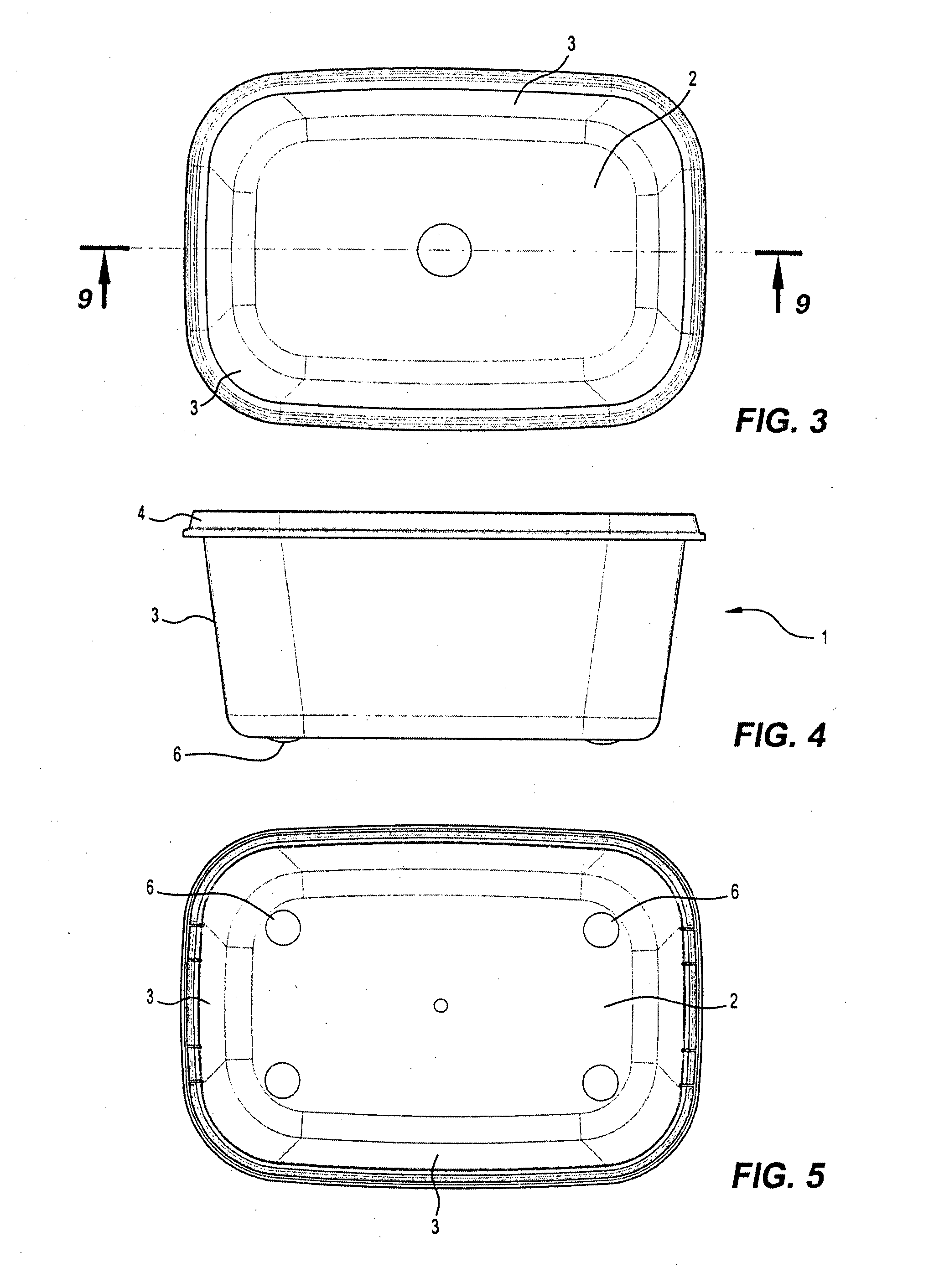Sealable containers
a technology of sealing containers and containers, applied in the direction of containers, ceramic containers, closures, etc., can solve the problems of deterioration, loss of structure integrity, and need to be exercised, and householders can be expected to always encounter problems/difficulties/frustrations
- Summary
- Abstract
- Description
- Claims
- Application Information
AI Technical Summary
Benefits of technology
Problems solved by technology
Method used
Image
Examples
Embodiment Construction
[0074]Turning to the drawings, and in particular to FIGS. 1 to 30 thereof, a container in accordance with a first aspect of the present invention includes, as principal components, a container base, generally designated 1, and a matching or compatible container lid, generally designated 100. It should be understood, however, that neither the material of construction of the overall container, nor the physical dimensions and shape thereof, are of the essence of the invention. The preferred material of construction is a plastics material but any mouldable material, as for example glass, could equally well be employed. As to overall shape, whilst the container base 1 and lid 100 illustrated are of a substantially oblong or rectangular shape when viewed in cross-section any shape could be employed, as for example, a square, elliptic or oval (round) shape, when viewed in cross-section. The height dimension of the container base 1 also may be varied from product to product, and does not co...
PUM
| Property | Measurement | Unit |
|---|---|---|
| Angle | aaaaa | aaaaa |
| Volume | aaaaa | aaaaa |
| Moldable | aaaaa | aaaaa |
Abstract
Description
Claims
Application Information
 Login to View More
Login to View More - R&D
- Intellectual Property
- Life Sciences
- Materials
- Tech Scout
- Unparalleled Data Quality
- Higher Quality Content
- 60% Fewer Hallucinations
Browse by: Latest US Patents, China's latest patents, Technical Efficacy Thesaurus, Application Domain, Technology Topic, Popular Technical Reports.
© 2025 PatSnap. All rights reserved.Legal|Privacy policy|Modern Slavery Act Transparency Statement|Sitemap|About US| Contact US: help@patsnap.com



